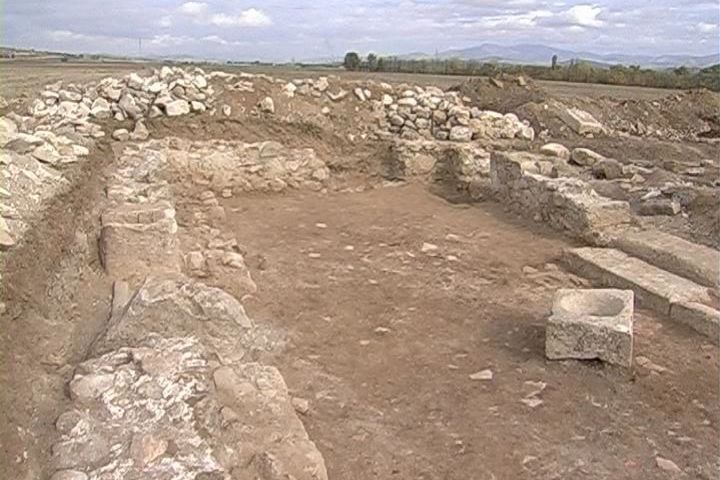Zoran
Μακεδоν τ
Completed archaeological surveys at the Dzhamadzhliski cemetery
This year’s research at the location Dzhamadzhliski cemetery near the archaeological site Bargala is completed. The professional teams from the Institute for Protection of Cultural Monuments and Museum of Shtip found significant findings, including ten graves from 3rd and 4th century AD and many items pottery originating from the iron period.

According to archaeologists, it is part of the Necropolis, the archaeological site Bargala with burial structures of stone, masonry tombs and memorial monuments with prolonged use.
- At deeper layers is found ceramic and bronze double needle weaving shaped M which indicates the existence of Paeonian settlement of this area, informed the Ministry of Culture.
Studies of this location were for the first time conducted in 2012 and revealed the walled cemetery and family crypt with six graves framed with stone blocks.
Archaeological research of the location Dzhamadzhliski cemetery will continue in 2014.
- - - Aktualisiert - - -
Mein Makedonien: Ancient city of Bargala
3D Bargala 4
This year’s research at the location Dzhamadzhliski cemetery near the archaeological site Bargala is completed. The professional teams from the Institute for Protection of Cultural Monuments and Museum of Shtip found significant findings, including ten graves from 3rd and 4th century AD and many items pottery originating from the iron period.

According to archaeologists, it is part of the Necropolis, the archaeological site Bargala with burial structures of stone, masonry tombs and memorial monuments with prolonged use.
- At deeper layers is found ceramic and bronze double needle weaving shaped M which indicates the existence of Paeonian settlement of this area, informed the Ministry of Culture.
Studies of this location were for the first time conducted in 2012 and revealed the walled cemetery and family crypt with six graves framed with stone blocks.
Archaeological research of the location Dzhamadzhliski cemetery will continue in 2014.
- - - Aktualisiert - - -
Mein Makedonien: Ancient city of Bargala
3D Bargala 4







